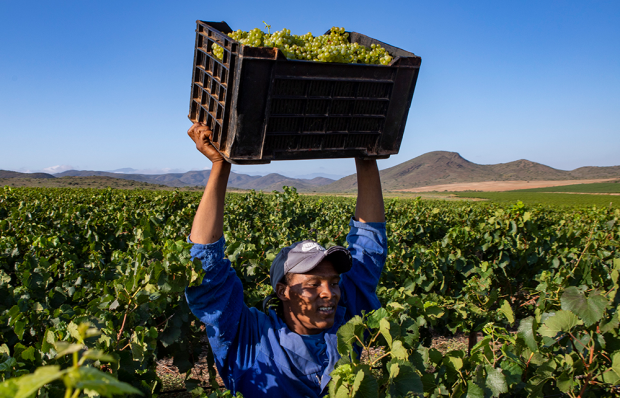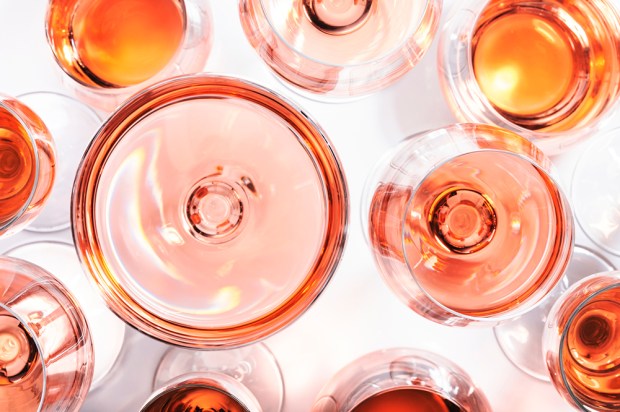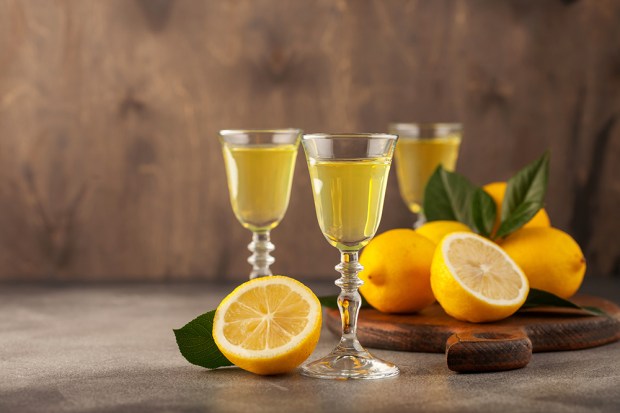St James’s Street is a repository of urban comfort. It contains majestic clubs, a gunsmith, a boot-maker, a barber, a cigar shop and a hatter. There are also restaurants, although the doyen is just round a corner in Jermyn Street: Wilton’s. Few if any establishments can match the quality of its seafood. It is as if the ghost of old Marks, its founder, was still on duty, to ensure no backsliding. In his day, a young aristocrat once enquired whether the smoked salmon was up to snuff. Marks looked pained. ‘I don’t know ’ow you can ask that question, my Lord. The smoked salmon ’ere is always the best that money can buy. So it should be. It’s caught by dukes and smoked by Jews.’
Other forms of fishmongery have been practised around the neighbourhood. In Tudor times, filles de joie flaunted their wares on the site now occupied by Berry Bros. More recently, during the world wars and the great days of the Cavendish Hotel, Rosa Lewis made sure that officers on leave enjoyed the rewards of gallantry.
No doubt Venus was lubricated by Bacchus. The street is also adorned by its twin temples to the wine god. Berry Bros and Justerini & Brooks are the friendliest of competitors, a bit like Oxford and Cambridge. But there is a difference. Only the most purblind Oxford man would deny that the universities’ standings have been decisively and eternally decided, with the Light Blues on top, world without end. The rivalry of the great wine merchants is far harder to resolve — and as long as they both flourish, who cares?
Recently, I was a guest of Justerini’s. The chairman, Hew Blair, a shrewd, humorous and learned fellow, is the right man for the location, for he is equally at home on a moor in the borders or an oenological laboratory in a French university. Stretching geo-graphy a little, St James’s Street is equidistant between the two. Over lunch, Hew’s theme was minerality. We started with a Pernand–Vergelesses Sous-Frétille, an ’06 1er Cru from the house of Rollin. At first taste, it seemed too mineral. Lots of structure, but was there enough fruit? It quickly opened out, and answered the question: plenty. It was harmonious, fresh and long on the palate with not a hint of the oxidisation that is terrifying everyone involved with white Burgundy. It is surprising that Pernand-Vergelesses has never commanded the reputation — or the price — of some neighbours. That bottle increased one’s surprise.
Onwards to a Chablis 1er Cru ’07, La Forest, from Dauvissat-Camus. It was hard to believe that the two wines were made from the same grape. The Chablis was everything that one would expect: a perfect balance of crispness and sweetness: of honey, hay and flint.
Moving to red, we started with a Pinot Noir 2010, from Bachelet-Monnot. A modest appellation, yet it would be a sound introduction to Pinot Noir. Delicate, but again there was a depth of length; it was well made. Then there was another contrast within the same grape. The Chevillons are the best wine-makers in the Côte de Nuits. They are also irritated that no wine from Nuits St Georges has yet been granted Grand Cru status and are pressing the claims of their Les St Georges, a strong candidate. We drank their ’95 Les Vaucrains, and I am glad not to have been asked to guess the year. I would have gone for 2002. It was a huge wine, full of power and subtlety: at its peak, but it is a high peak with a broad plateau. We both thought that there was absolutely no hurry to drink it up.
Hew then brought minerality to a climax with an Eiswein. The grapes for this Ockfener Bockstein ’89, made by Dr Fischer, grow on slatey soil, so there is a spine of minerality underlying its immense, succulent sweetness: slate melted down in honey. Eiswein is rare and precious, to be worshipped as well as drunk. A wine of that quality leaves superlatives in the dust of its chariot wheels. Although it comes from the Mosel, it tastes of Rheingold.
Got something to add? Join the discussion and comment below.
Get 10 issues for just $10
Subscribe to The Spectator Australia today for the next 10 magazine issues, plus full online access, for just $10.
You might disagree with half of it, but you’ll enjoy reading all of it. Try your first month for free, then just $2 a week for the remainder of your first year.














Comments
Don't miss out
Join the conversation with other Spectator Australia readers. Subscribe to leave a comment.
SUBSCRIBEAlready a subscriber? Log in